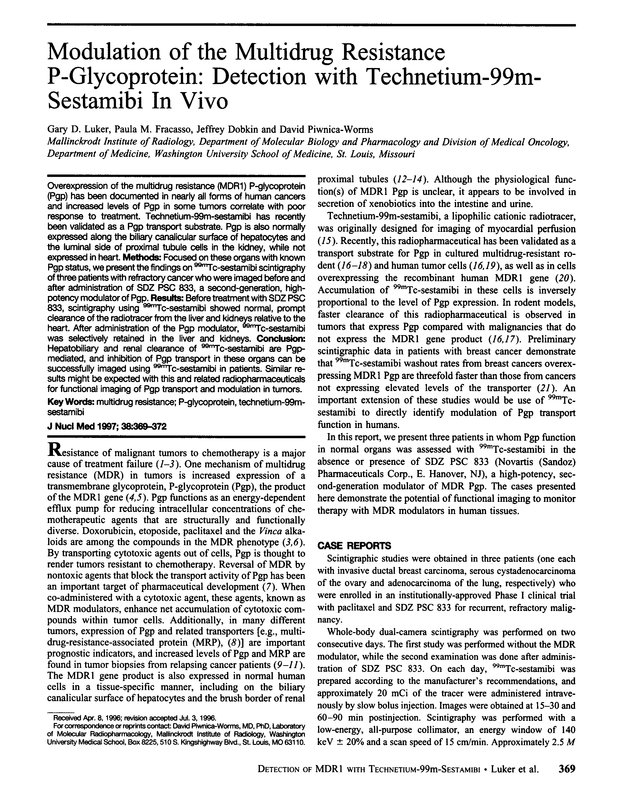Research ArticleNuclear Oncology
Modulation of the Multidrug Resistance P-Glycoprotein: Detection with Technetium-99m-Sestamibi In Vivo
Gary D. Luker, Paula M. Fracasso, Jeffrey Dobkin and David Piwnica-Worms
Journal of Nuclear Medicine March 1997, 38 (3) 369-372;
Gary D. Luker
Paula M. Fracasso
Jeffrey Dobkin


This is a PDF-only article. The first page of the PDF of this article appears above.
In this issue
Modulation of the Multidrug Resistance P-Glycoprotein: Detection with Technetium-99m-Sestamibi In Vivo
Gary D. Luker, Paula M. Fracasso, Jeffrey Dobkin, David Piwnica-Worms
Journal of Nuclear Medicine Mar 1997, 38 (3) 369-372;
Jump to section
Related Articles
- No related articles found.
Cited By...
- Bioimaging Real-Time PXR-Dependent mdr1a Gene Regulation in mdr1a.fLUC Reporter Mice
- A new model for studying tissue-specific mdr1a gene expression in vivo by live imaging
- Characterization of a 67Ga/68Ga Radiopharmaceutical for SPECT and PET of MDR1 P-Glycoprotein Transport Activity In Vivo: Validation in Multidrug-Resistant Tumors and at the Blood-Brain Barrier
- A Phase I/II Study of Infusional Vinblastine with the P-Glycoprotein Antagonist Valspodar (PSC 833) in Renal Cell Carcinoma
- Increased 99mTc-Sestamibi Accumulation in Normal Liver and Drug-resistant Tumors after the Administration of the Glycoprotein Inhibitor, XR9576
- Evaluation of Pediatric CNS Malignancies with 99mTc-Methoxyisobutylisonitrile SPECT
- Phase I and Pharmacokinetic Study of the Novel MDR1 and MRP1 Inhibitor Biricodar Administered Alone and in Combination With Doxorubicin
- A New in Vivo Method to Study P-Glycoprotein Transport in Tumors and the Blood-Brain Barrier
- Efflux of Rhodamine From CD56+ Cells as a Surrogate Marker for Reversal of P-Glycoprotein-Mediated Drug Efflux by PSC 833





